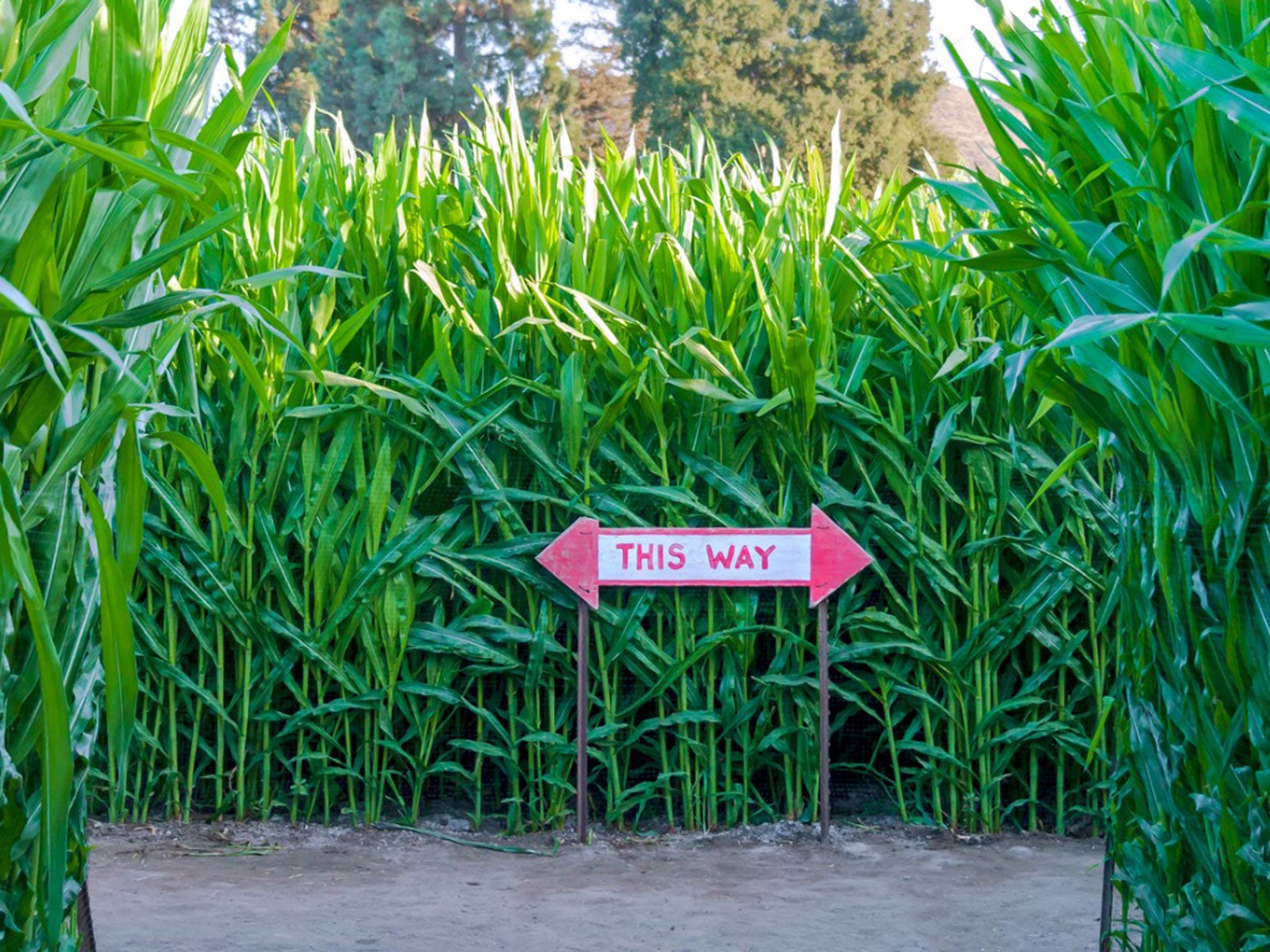
Many of us fondly remember getting lost in a corn maze when we were kids. Little did we know how much effort went into making an afternoon of fun! Growing a corn maze isn’t just about growing corn. It takes a lot more than growing the crop to build a successful corn maze business. For one thing, a DIY corn maze grower needs ideas, and good ones at that, to attract customers. Read on to learn the ins and outs of how to grow a corn maze.
Corn Maze Ideas
You need to have a great idea for a design when it comes to creating your own corn maze. A corn maze is often comprised of two components: a picture in the design of the maze and a challenge. The difficulty of the challenge depends upon the clientele you want to attract, while the design will depend on field size and cutting method.
If you are artistic and engineer minded, you can design a DIY corn maze yourself. For the rest of us, there are companies that actually specialize in designing corn mazes. The professional corn maze designer will assist you with how to fit a particular design into your acreage, provide the right challenge for your clients, and assist with all the particulars of running a corn maze from parking and signage to ticket sales and maintenance.
How to Grow a Corn Maze
If you have garden space of note or some acreage, a DIY corn maze may be in your future and you’re not alone; agritourism is a booming business for many farmers.
Once you have a design and a business plan for how to run a corn maze, it’s time to plant the corn. Interestingly, while corn is normally planted in the spring, corn for a corn maze is planted for growing late in the season. Late season silage is the best type of corn to plant for a maze because you want it to stay green while the kiddos are running amok. Sweet corn is usually sown in the spring, harvested, and sold. Then in early July the field is re-tilled and re-planted with the silage.
Corn seed for a maze is cross planted – north and south and then east and west. This will result in a thick, lush planting that intersects at right angles. Seed should be sown ¼ to 1 inch deep (6 mm. to 2.5 cm.) in rows spaced 36 inches (91 cm.) apart. Once the seed is sown, overhead irrigation to provide an inch (2.5 cm.) of water per week should be implemented. When the corn is 3 to 6 inches (8-15 cm.) tall, it’s time to cut the design.
Additional Considerations When Growing a Corn Maze
If a professional company has been hired to complete the corn maze, they will use a modern GPS system that geo-references the field and then sends an image that looks like a road map to the tiller driver. If this is truly a DIY maze, the grower and a few friends might use weed whackers to cut paths into the corn field. In either case, the paths are cut while the corn is still short, and it takes another couple of months for the stalks to grow head tall or taller.
Sign up for the Gardening Know How newsletter today and receive a free copy of our e-book "How to Grow Delicious Tomatoes".
Paths need to be kept mulched or straw covered to make walking easier as well. When the design has been cut, it’s a good time to get out the word about the upcoming venture. Marketing a corn maze will make the difference between just putting in a lot of hard work and profiting from that work.
Lastly, creating a corn maze can be a lot of fun, but before you even begin, have a budget laid out that includes not only the cost of the seed and maintenance for growing the field but also path maintenance, parking improvement, signage, promotion, advertising costs, labor, tickets or wristbands, employee uniforms, public restrooms, and liability insurance.

Amy Grant has been gardening for 30 years and writing for 15. A professional chef and caterer, Amy's area of expertise is culinary gardening.
